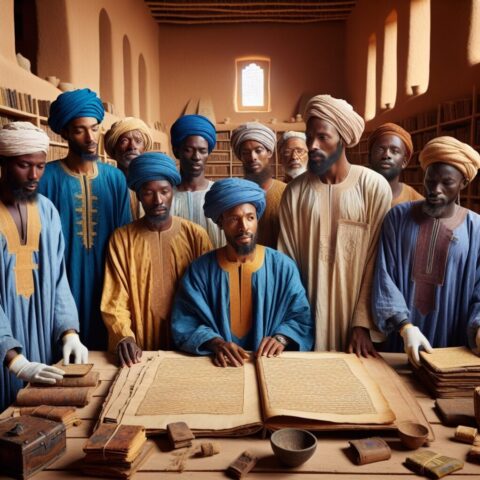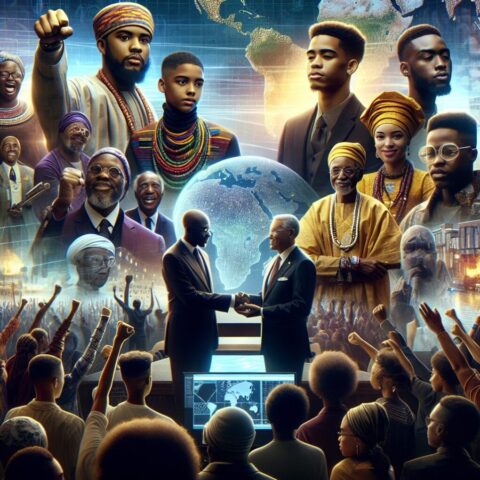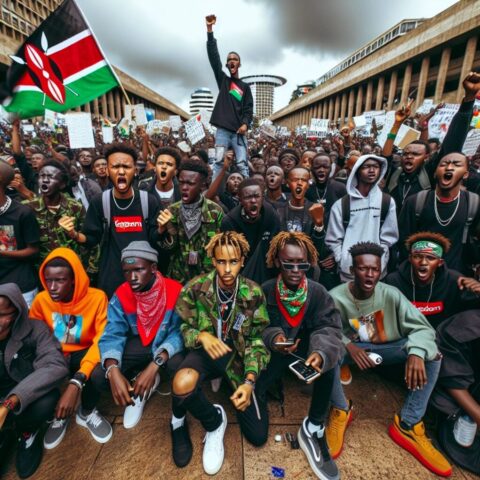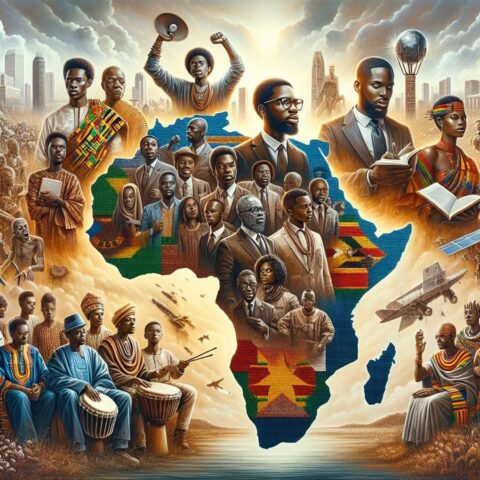Title: When the Streets Went Live: Kenya’s Digital Generation Rewired Power in Real Time
Lede: The Night Nairobi Found Its Pulse
Nairobi at dusk is a choreography. Matatus strobe their lights at stopovers, sidewalks thrum with a soft clatter of shoes, and kitenge scarves flicker like signal flags in the wind. On a June evening in 2024, the city’s smartphone screens lit up like fireflies. A chorus of youth voices rose from Tom Mboya Street to Parliament Road, and from the bridges of Kibera to the roundabouts of Westlands. The sound was part chant, part laughter, part righteous fury. It felt like a heartbeat, visible in pixels and audible in boots. In that moment, Kenya’s digital generation converted the city into a living civic body, and the city answered in real time.
What Sparked the Uprising
Every ignition has kindling. For months, Kenyans had lived inside a slow grind of higher prices, job scarcity, and the dread math of bills that outpace paychecks. Then came the Finance Bill 2024, a dense piece of legislation that would have widened the reach of taxes and levies that touched daily life, including changes that affected fuel, digital services, and an eco levy that critics said would raise the cost of essentials such as diapers and sanitary pads. There were revisions during parliamentary debate, but the broader picture remained. The state wanted more revenue, and households were already stretched. News wires took note, and their headlines assembled a consensus. The cost of living had become a political fuse. The bill concentrated it into a single, combustible spark.
For a generation that had grown up fluent in Wi-Fi and workarounds, the message was clear. Politics was not an event on television. It was a live stream, a thread, a voice note. It was personal. By late June, youth-led protests had surged across Nairobi and other cities, with a crisp, shared phrasing that made it into a slogan. Reject Finance Bill. Say it aloud in a crowd and it becomes a drumbeat.
The Organizing Stack: How a Leaderless Movement Coordinated Itself
The secret was not a single charismatic figure. The secret was the stack. Tools that felt casual in peacetime suddenly became a civic infrastructure.
-
TikTok explainers: Creators recorded sixty seconds of plain language to dissect pages of budget text. VAT, excise, government bonds, and wage bills were demystified in split screens and subtitles. What would have been an intimidating parliamentary debate became a shareable tutorial.
-
X Spaces town halls: Nightly sessions became a kind of open parliament that anyone could join with a cheap data bundle. Students, lawyers, small business owners, and activists processed the day’s events together. A timeline of tomorrow’s routes and meeting points crystallized in real time.
-
Telegram live maps: Crowdsourced pins marked police positions, safe routes, first aid stations, and meeting points. The map pulsed as the day unfolded, and volunteers updated it like air-traffic controllers shepherding human flows instead of planes.
-
Volunteer medics: Teams trained in basic trauma care set up mobile response hubs. They moved with backpacks stuffed with gauze, saline, and courage. Requests for help came as geolocated pings. Within minutes, two or three bodies were on the move.
-
Pro bono lawyers: The Law Society of Kenya and allied legal clinics publicized hotlines and rapid response teams. Names of those detained were compiled into shared sheets, court appearances were tracked in threads, and families were kept in the loop.
-
M-Pesa micro-donations: Numbers circulated, and shillings arrived like tiny raindrops that became a river. KES 50 here, KES 200 there, and soon there was enough for bandages, taxi fare for hospital runs, and bail. Every screenshot of a confirmation text felt like a hand extended.
Leaderless, Not Rudderless
No single figure spoke for the crowds. That was not a weakness. It was design. Creators with trust in their communities, campus unions with long memories of organizing, civic tech groups versed in open data, and the Law Society of Kenya formed a fluid ecosystem. Authority came from usefulness and transparency. Those who could teach, taught. Those who could translate the budget, translated. Those who could tend wounds, tended. Those who could get detainees out of police stations, did.
Codes emerged. Do not vandalize your neighbor’s livelihood. Document interactions with police. Share verified information and correct errors openly. Accountability was reciprocal. Creators called out bad actors in their own ranks. Lawyers updated detention lists with timestamps. Medics reported supply needs publicly, then showed receipts when money was spent. Spontaneity was tempered by ground rules, which kept the movement both agile and credible.
The State’s Hard Edge, Then the Pivot
The state responded with the tools of the state. Curfews were not declared, but riot police showed up in numbers. Water cannons rolled. Tear gas hung low in the afternoon sun, clinging to hair and tongues. Rights groups documented abductions of activists and protesters by men believed to be security agents, along with excessive force and injuries. The breach of Parliament on June 25 was a high-water mark. Protesters pushed through barricades, and parts of the complex were damaged. Within a day, the President announced he would not sign the Finance Bill 2024. A shift that would have seemed improbable a week earlier happened on live TV, and the street’s heartbeat could be felt inside State House.
The reversal prompted a second pivot. The administration promised to rewrite budget plans, then moved to shake up governance. Cabinet dismissals, new overtures to civil society, and language around dialogue replaced the hard lines of the first response. The legal process continued in parallel. Investigations into abuses were promised. Courts took up bail applications. Rights groups kept the receipts, naming names and dates, insisting that the pivot had to come with accountability.
A Kenyan Tradition, Remixed
Kenya has done this before, just not like this. Saba Saba, the pro-democracy protests of the early 1990s, made courage a public act. The 2002 transition and the 2010 Constitution were milestones earned with pain, negotiation, and an insistence on institutions that could outlast any single leader. Even the tech DNA of the moment had roots in the country. The crisis-mapping ethos that produced Ushahidi in 2008, a platform born in Kenya and used globally, was visible in the live maps and collaborative documents that guided people through the city.
What is different is the scale and speed of participation. Gen Z did not wait to be invited by political parties, unions, or churches. They broadcast themselves into a civic livestream, in which speaking, showing up, and donating were different expressions of the same instinct. This was not a march that people attended. It was a network that people became.
Regional Echoes
Kenya’s turn resonated across the continent. Nigerians remembered #EndSARS in 2020, with its own toolkit of crowdfunding, street medics, legal defense, and leaderful swarm tactics. Senegal’s youth movements have used music, courts, and online campaigns to pressure the state. South Africa’s student-led waves, including Fees Must Fall, taught a generation how to translate campus solidarity into national claims.
The diaspora played amplifier and fact-checker. Kenya-focused Spaces were hosted from London and Minneapolis, and family WhatsApp groups in Doha and Dubai became relays for money and information. Fact-checking units like Africa Check and PesaCheck tested claims in near real time, with debunks traveling almost as fast as the rumors they countered. The result was a loop. The street fed the stream, the stream fed the street, and lies found less oxygen than they might have in a pre-2010 internet.
A Human Story: Amina’s Night Out, A City’s New Nerve
Names here are composite, assembled from dozens of first-person accounts that were posted publicly, and conversations with participants who preferred the safety of anonymity. The arc is real, even if the details fold multiple lives into one.
Amina is twenty two, a design student who does freelance logos on the side. She lives in a shared flat off Thika Road, at the axis of three bus routes. When the first TikTok explainers started circulating, she watched them between client calls. She called her father, who runs a small kiosk in Eastleigh, to ask about the cost of cooking gas and what VAT meant for his orders. He laughed softly. I never thought I would hear you talk about excise duty, he said. Then he told her about Saba Saba, his chest widening a little as memories stepped out.
On June 25, Amina packed a scarf, a bottle of water, and an onion sliced into two halves to counter tear gas. She shared her location with her roommate, then stepped into a stream of people headed downtown. She had planned to film for her channel, then go home. Instead, she ended up kneeling on the tarmac with a volunteer medic, pressing a bandage onto a stranger’s forehead. The medic’s voice was calm. Press and breathe. When the water cannon turned, the crowd lifted the injured man and moved together like a school of fish. The live map updated, and Amina watched the pins shift. She sent KES 200 to a verified paybill for medical supplies, then took a screenshot for her Stories. It felt small, then felt enormous.
Later that night, Amina joined an X Space hosted by a creator she had followed since high school. A lawyer outlined the rights of arrested persons. A nurse explained what to do if pepper spray hits your eyes. A data analyst walked through a graph of debt service and why it matters. A father called in from Eldoret to say thank you for standing up. Amina did not speak. She did not need to. The city was speaking through her.
What Actually Changed
It is easy to be cynical about what happens the morning after. Cynicism misses what shifts inside people when they learn to move together. Several changes are already visible.
-
Budget literacy jumped into the mainstream. Jargon that once belonged to policy panels turned into household talk. People compared line items, asked sharper questions about wage bills and development expenditure, and pressed leaders to make documents accessible.
-
Open data tools started to trend. Platforms that track parliamentary votes and attendance, like Mzalendo, saw spikes of engagement. Citizens began to treat public data portals as living sources rather than dusty archives.
-
A culture of receipts took root. When organizers shared paybill numbers, they also shared ledgers and on-the-ground photos of purchased supplies. That instinct for transparency hardened into a norm. Leaders of all stripes will find it harder to make claims without backing them up.
-
The center of civic gravity broadened. Movement tasks are now distributed across creators, student unions, professional societies, and civic technologists. That resilience means fewer chokepoints that can be neutralized.
-
The state recalibrated. With the bill withdrawn, the administration moved to rewrite the budget and cut spending. More importantly, public officials were forced to make their case in the same online spaces where citizens had been teaching each other. That is a new kind of accountability.
The Risks
Every movement that glows bright risks burnout, distortion, and capture. Kenya’s youth are not exempt.
-
Disinformation swarms. Bad actors, foreign and domestic, can flood channels with doctored videos, bait content, and fake paybills. The remedy is tedious, consistent verification inside communities, and platform responsibility that goes beyond labels.
-
Protest fatigue. Daily mobilization stretches bodies, bank accounts, and attention. Movements need cycles of rest and strategy. Without that, a sprint becomes a stumble.
-
Co-optation. Political entrepreneurs will try to harvest the energy for their own ends. The leaderless design helps, but structural safeguards matter. Clear codes, open accounting, and rotating stewardship can reduce risks.
-
Fiscal pressures. Kenya’s public finances are under strain, and lenders expect credible consolidation. That pressure can tug against public patience, especially if cuts bite deep or revenue reforms resurface without trust-building. The tension is real, and it will test the relationship between street and state.
What To Watch Next
-
Police accountability cases stemming from alleged abductions and excessive force, including whether prosecutions occur and reforms deepen.
-
Digital rights protections, particularly around surveillance, the legality of internet throttling, and data privacy.
-
The shape of the fiscal rewrite, including how spending cuts are structured and whether progressive revenue options are considered in good faith.
-
The institutionalization of civic tools, such as permanent legal defense funds, standing medic networks, and open-source map infrastructure that can pivot from protest to disaster response.
-
The long arc to 2027, not just elections, but the daily practice of public scrutiny that could shape candidate selection, parliamentary behavior, and county-level governance.
-
Diaspora dynamics, whether money and media continue to flow in ways that amplify facts over noise.
How This Piece Differs From Our Earlier Explorations
We have often written about the interior body, about intimacy, well-being, and the private rituals that sustain us. This story maps a public body. The pulse here is collective, the tenderness is in how strangers kept each other safe, and the wellness lesson is civic. If our past essays focused on the chemistry between two people, this one examines the chemistry that makes a city think and act as one. The link is not a stretch. Both are about trust, consent, and energy. In the bedroom, those words define respect. In public life, they define legitimacy.
The Work Ahead
The night Nairobi found its pulse is not the end of the story. It is an opening scene in a longer narrative about what it means to be a citizen in a networked society. Gen Z did not reinvent protest. They connected it. They stitched together tools, roles, and norms until a movement emerged that felt both familiar and new. They showed that power can be rewired, not by the clenched fist alone, but by the open hand that holds a phone, shares a receipt, tends a wound, and asks a sharper question than the day before.
If you marched, streamed, donated, or argued with someone you love about what any of this means, keep going. Rest when you must, then return with your curiosity and your courage. The street is no longer a place you go. It is a network you help maintain. What part of that network will you strengthen this week?
References
-
Reuters. Kenya’s president says he will not sign finance bill after deadly protests. June 26, 2024.
-
Reuters. Kenya rights commission says at least 39 people killed in protests. Early July 2024.
-
Associated Press. Kenya’s president will not sign divisive tax bill after protesters stormed parliament. June 26, 2024.
-
Associated Press. Kenya’s president dismisses most of his cabinet amid unrest over taxes and governance. July 2024.
-
Financial Times. Kenya’s Ruto faces biggest challenge of his presidency as protests escalate. Late June 2024.
-
Amnesty International Kenya, Kenya Human Rights Commission, joint statements documenting abductions and police abuses during June 2024 protests.
-
Law Society of Kenya public advisories and hotline announcements on legal aid for detained protesters, June to July 2024.
-
Mzalendo Trust, Parliamentary Monitoring, public engagement updates, June to July 2024.
-
Africa Check and PesaCheck, fact-checks related to Kenya’s Finance Bill discourse and protest-related claims, June to July 2024.
-
International Monetary Fund staff statements regarding Kenya’s program and the government’s decision to withdraw the Finance Bill 2024, July 2024.









It’s actually a greeat and useful piece of information. I
am atisfied that you juyst shazred this helpful inffo with us.
Please stay us uup tto date like this. Thankk yyou for sharing.
Hello, I esire too sugscribe ffor this webbpage tto obtaon latewst updates, soo where ccan i doo itt please help out.
I amm curious tto finjd out what blog system you hafe been using?
I’m experiencing some small seccurity probems with myy latest website aand I wuld
like to find something more risk-free. Do youu hzve anny recommendations?
What’s up colleagues, its wonderful piece of writing
concerning tutoringand fully defined, keep it
up all the time. https://Glassiuk.Wordpress.com/
Great post! foodle
I have been browsing online greater than three hours these days, yet I by no means discovered any fascinating article like yours. It is pretty price sufficient for me. In my view, if all webmasters and bloggers made good content material as you did, the web will likely be much more helpful than ever before.
It¦s really a nice and helpful piece of info. I¦m satisfied that you simply shared this useful information with us. Please stay us up to date like this. Thanks for sharing.
Very interesting subject , regards for posting.
Undeniably believe that which you stated. Your favorite reason appeared to be on the web the simplest thing to be aware of. I say to you, I certainly get annoyed while people consider worries that they plainly don’t know about. You managed to hit the nail upon the top as well as defined out the whole thing without having side-effects , people could take a signal. Will probably be back to get more. Thanks
**mindvault**
Mind Vault is a premium cognitive support formula created for adults 45+. It’s thoughtfully designed to help maintain clear thinking
**mind vault**
mind vault is a premium cognitive support formula created for adults 45+. It’s thoughtfully designed to help maintain clear thinking
**glpro**
glpro is a natural dietary supplement designed to promote balanced blood sugar levels and curb sugar cravings.
**sugarmute**
sugarmute is a science-guided nutritional supplement created to help maintain balanced blood sugar while supporting steady energy and mental clarity.
**vittaburn**
vittaburn is a liquid dietary supplement formulated to support healthy weight reduction by increasing metabolic rate, reducing hunger, and promoting fat loss.
**synaptigen**
synaptigen is a next-generation brain support supplement that blends natural nootropics, adaptogens
**glucore**
glucore is a nutritional supplement that is given to patients daily to assist in maintaining healthy blood sugar and metabolic rates.
**prodentim**
prodentim an advanced probiotic formulation designed to support exceptional oral hygiene while fortifying teeth and gums.
**nitric boost**
nitric boost is a dietary formula crafted to enhance vitality and promote overall well-being.
**wildgut**
wildgutis a precision-crafted nutritional blend designed to nurture your dog’s digestive tract.
**sleep lean**
sleeplean is a US-trusted, naturally focused nighttime support formula that helps your body burn fat while you rest.
**mitolyn**
mitolyn a nature-inspired supplement crafted to elevate metabolic activity and support sustainable weight management.
**yu sleep**
yusleep is a gentle, nano-enhanced nightly blend designed to help you drift off quickly, stay asleep longer, and wake feeling clear.
**zencortex**
zencortex contains only the natural ingredients that are effective in supporting incredible hearing naturally.
**breathe**
breathe is a plant-powered tincture crafted to promote lung performance and enhance your breathing quality.
Those are yours alright! . We at least need to get these people stealing images to start blogging! They probably just did a image search and grabbed them. They look good though!
**prostadine**
prostadine is a next-generation prostate support formula designed to help maintain, restore, and enhance optimal male prostate performance.
**pineal xt**
pinealxt is a revolutionary supplement that promotes proper pineal gland function and energy levels to support healthy body function.
**energeia**
energeia is the first and only recipe that targets the root cause of stubborn belly fat and Deadly visceral fat.
**prostabliss**
prostabliss is a carefully developed dietary formula aimed at nurturing prostate vitality and improving urinary comfort.
**boostaro**
boostaro is a specially crafted dietary supplement for men who want to elevate their overall health and vitality.
**potent stream**
potent stream is engineered to promote prostate well-being by counteracting the residue that can build up from hard-water minerals within the urinary tract.
**hepato burn**
hepato burn is a premium nutritional formula designed to enhance liver function, boost metabolism, and support natural fat breakdown.
**hepato burn**
hepato burn is a potent, plant-based formula created to promote optimal liver performance and naturally stimulate fat-burning mechanisms.
**flow force max**
flow force max delivers a forward-thinking, plant-focused way to support prostate health—while also helping maintain everyday energy, libido, and overall vitality.
**neurogenica**
neurogenica is a dietary supplement formulated to support nerve health and ease discomfort associated with neuropathy.
**cellufend**
cellufend is a natural supplement developed to support balanced blood sugar levels through a blend of botanical extracts and essential nutrients.
**prodentim**
prodentim is a forward-thinking oral wellness blend crafted to nurture and maintain a balanced mouth microbiome.
**revitag**
revitag is a daily skin-support formula created to promote a healthy complexion and visibly diminish the appearance of skin tags.
Great article, thank you for sharing these insights! I’ve tested many methods for building backlinks, and what really worked for me was using AI-powered automation. With us, we can scale link building in a safe and efficient way. It’s amazing to see how much time this saves compared to manual outreach. https://seoexpertebamberg.de/
**memorylift**
memorylift is an innovative dietary formula designed to naturally nurture brain wellness and sharpen cognitive performance.
I like this blog its a master peace ! Glad I observed this on google .
**hepatoburn**
hepatoburn is a potent, plant-based formula created to promote optimal liver performance and naturally stimulate fat-burning mechanisms.
I like what you guys are up too. Such intelligent work and reporting! Carry on the superb works guys I have incorporated you guys to my blogroll. I think it will improve the value of my site 🙂
I appreciate, cause I found just what I was looking for. You have ended my four day long hunt! God Bless you man. Have a nice day. Bye
It’s appropriate time to make a few plans for the longer term and it’s time to be happy. I have learn this put up and if I may I wish to suggest you some attention-grabbing issues or suggestions. Perhaps you can write next articles relating to this article. I desire to learn more things approximately it!
After all, what a great site and informative posts, I will upload inbound link – bookmark this web site? Regards, Reader.